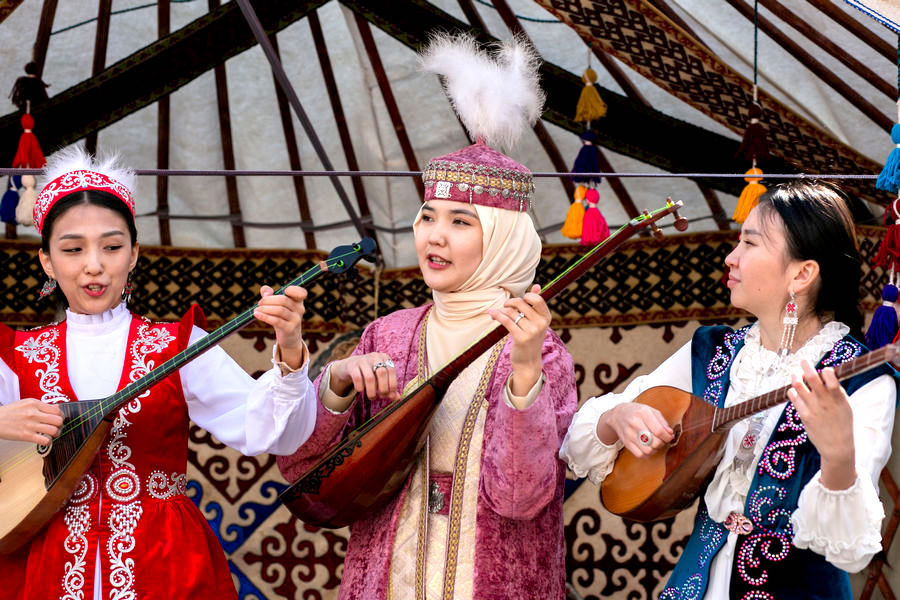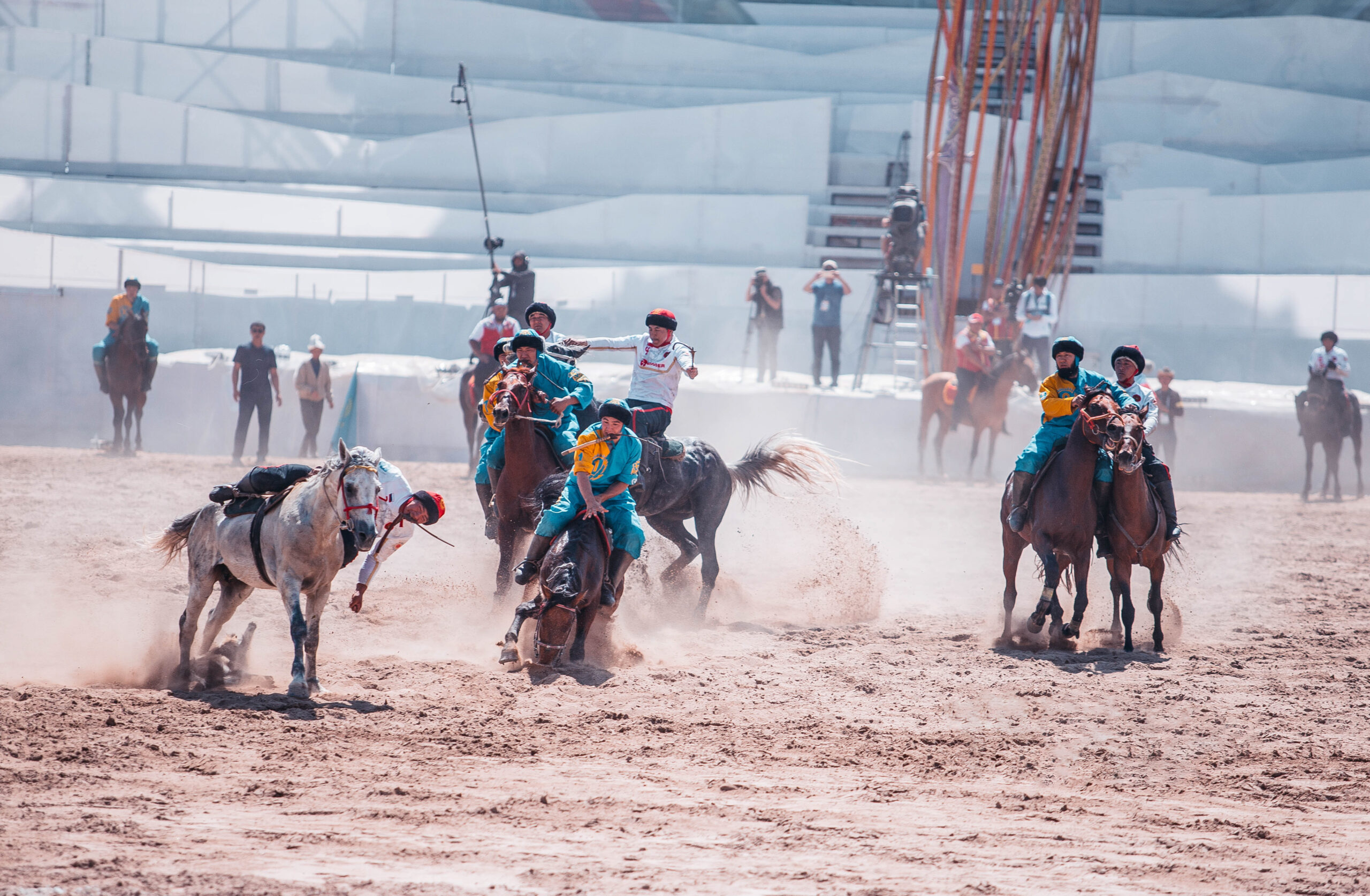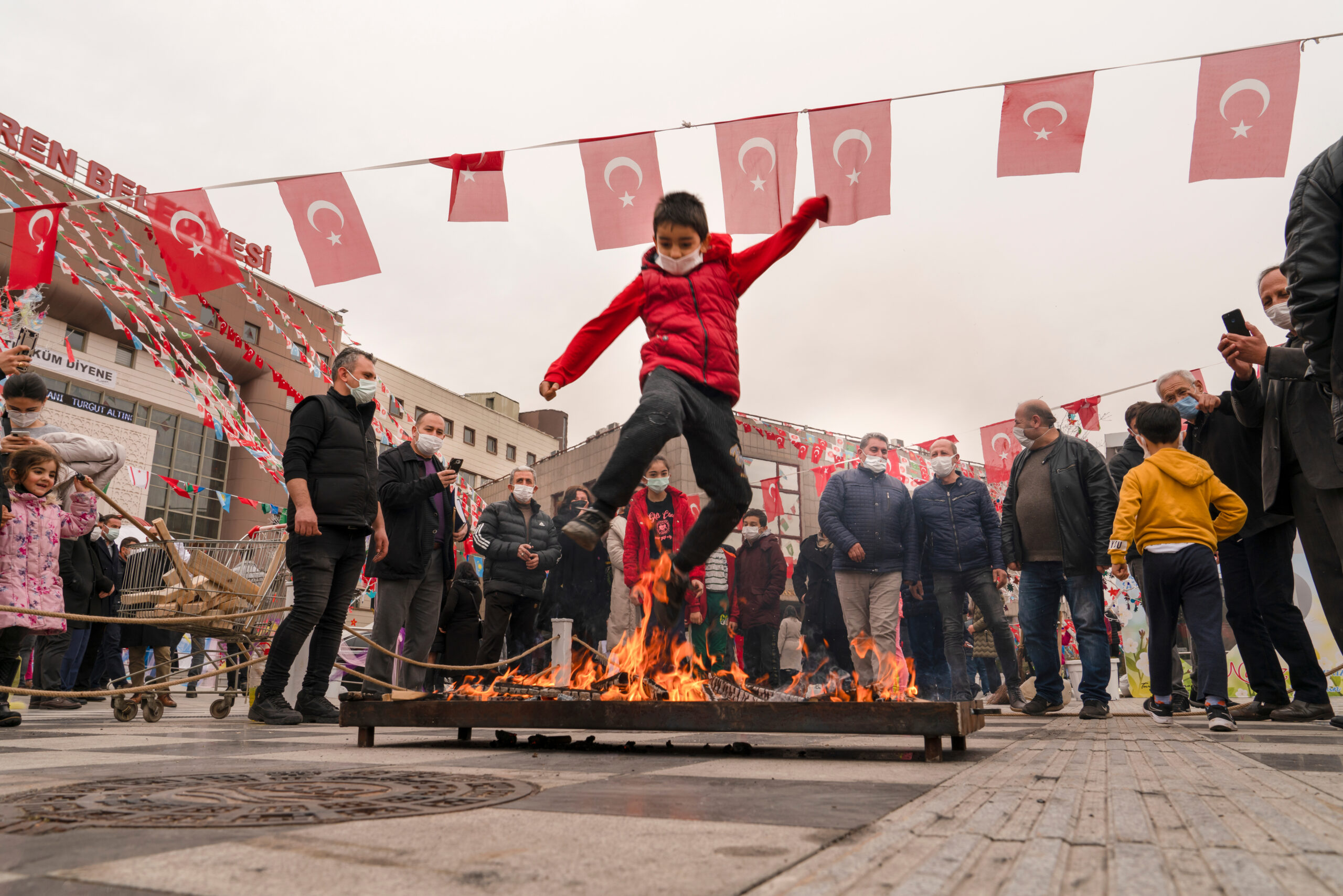ASTANA – Nauryz, an age-old Eastern celebration, marks the advent of spring and the commencement of a new year in accordance with the solar calendar. Beyond its cultural meaning, Nauryz serves as a unifying force for the nations that celebrate it.

Kazakh girls in traditional attire. Photo credit: shutterstock.com.
On Sept. 30, 2009, Nauryz was included in the United Nations Educational, Scientific and Cultural Organization (UNESCO) Representative List of the Intangible Cultural Heritage of Humanity. The decision brought international recognition to the holiday celebrated by numerous ethnicities worldwide.
Nauryz is celebrated as a public holiday in Central Asian countries, Afghanistan, Albania, Azerbaijan, Georgia, Mongolia, North Macedonia, and Türkiye. Ethnic communities from other states also participate in the festivities, extending the celebration’s reach to regions in Bosnia and Herzegovina, China, India, and Iraq. Russian federal subjects, such as Dagestan, Tatarstan, and Bashkortostan also hold celebrations.
It is customary to organize festive activities and musical gatherings, dress up in traditional attire, and play folk games. During the celebration, people spend time with their families and friends, taking care of their loved ones.
Nauryz in Kazakhstan and Central Asia
Nauryz holds deep cultural significance, particularly in its association with the number seven. The symbolism is evident in traditions, ranging from the seven ingredients blended in national dishes and served in seven bowls, to the practice of welcoming seven guests into one’s home and visiting seven households.

Kazakh and Kyrgyz teams play kokpar game – traditional horseback competition.jpg Photo credit: shutterstock.com.
Preparations for Nauryz begin with the national cuisine. For Central Asian people, a shared culinary heritage is deeply intertwined with cultural exchanges among the nations. For example, wheat sprouts symbolize abundance and are essential for a festive table.
In Kazakhstan, Nauryz koje takes center stage in culinary preparations. The traditional spring soup incorporates seven fundamental ingredients: water, meat, salt, oil, flour, wheat, and milk, each symbolizing earthly virtues (growth, luck, happiness, wealth, health, wisdom, and heavenly protection).

Kazakh national cuisine. Photo credit: shutterstock.com.
The local belief says that by sampling it in seven houses, one ensures a year filled with happiness and good fortune. The dastarkhan, a richly set table in Kazakh culture, also features baursaks (puffy fried bread) and beshbarmak (a national dish of boiled meat with dough).
In Uzbekistan (Navruz), the main ceremonial dish of the holiday is sumalyak, a sweet paste made entirely from sprouted wheat. When tasting it, people make a wish. The Kyrgyz nation (Nowruz) calls the same delicacy sumelek. Kyrgyz people also serve keje, a soup made from bull meat cooked with rice, peas, wheat, corn, talqan (flour of coarse grinding from roasted barley or wheat), flour, potatoes, buckwheat, and a blend of spices.

National dances in Tashkent on Navruz in 2018. Photo credit: shutterstock.com.
For the Tajik nation (Navruz), it is a tradition to have seven dishes on the table, including their versions of keje and sumelek. In Turkmenistan (Navruz), the holiday marks the onset of the agricultural season. Their major delicacy called semeni is also made of wheat sprouts.
The nomadic lifestyle of Central Asian people is closely associated with horses. For nomads, equestrian games have always been an integral part of festivities.
A traditional game called Kokpar is recognized as an official equestrian sport in Kazakhstan, Uzbekistan, and the Kyrgyz Republic, with the prestigious kokpar championship held at the World Nomad Games. Horse riders compete to seize and deliver a ram carcass to a designated point or toss it into a large cauldron. Horse races, eagle hunting, board games, and playful activities not only showcase customs and traditions, but promote healthy lifestyle.
Nauryz as a testament of Turkic unity
Nauryz is a holiday celebrated by people of Turkic and Persian descent. It also stands as a testament to the enduring legacy of Turkic civilization.
The first reference to the spring holiday was found in Avesta, the collection of religious texts on Zoroastrianism. In Zoroastrianism, fire holds profound significance as a symbol of purity, enlightenment, and the divine presence.

People watching Nowruz celebrations in Ankara in 2021. Photo credit: shutterstock.com.
In Türkiye, Nauryz is known as Nevruz or Nowruz. Turkish customs include the use of the sacred fire, although nowadays it is often replaced by fireworks. According to a legend, jumping over the fire seven times during the celebration is believed to bring luck and success.
On this festive occasion, Turkish people surround themselves with symbols attracting happiness, health, and prosperity, such as barley sprouts, wine, and money.
From 1925 to 1991, Türkiye officially prohibited the celebration of Nauryz due to the policy of state secularization. Yet, the early 1990s witnessed a resurgence of the cherished tradition.
The countdown to the holiday in Azerbaijan (Novruz) commences a month earlier, marked by four consecutive Tuesdays, each embodying one of nature’s elements – water, fire, earth, and air. It is also customary for Azerbaijanis to serve seven dishes on the table that start with the S letter.
Alongside the traditional dishes, the table is adorned with a mirror, a candle, and colored eggs, each carrying special meaning. The candle symbolizes fire and light, guarding against evil spirits, while the egg and mirror signify the end of the old year and the beginning of the new year.
Nauryz celebrations festivities offer a precious moment of joy and solidarity, serving as a reminder of the strength found in shared traditions and the promise of renewal that accompanies each new year.


